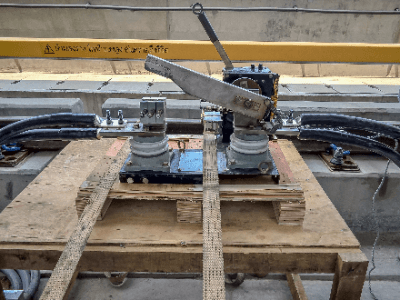What Is a Disconnect?

A disconnect is a device used to open or close a circuit that is not carrying load current.
Also called a disconnector, it can disconnect a load circuit from the power supply. However, a disconnect cannot be opened on a circuit with a load current flowing. If a load current is opened with a disconnect, there is a high possibility that it will lead to an explosion or fire due to arcing. Therefore, they are used with circuit breakers that can interrupt the load current.
Uses of Disconnects
Disconnects are used only in industrial applications because they are dedicated high-voltage or special high-voltage electrical equipment.
Disconnects are used when checking or repairing high-voltage equipment to prevent electric shock when touched by a person. The purpose of using a disconnect is to disconnect an electrical circuit from the power source.
Principle of Disconnects
A disconnect consists of a blade, a catch, a base, and a supporting insulator.
1. Blade and Catch
The blade and catch are conductive points. When the blade fits into the catch, it conducts, and when it moves away, it opens. It is mainly composed of hot-dip galvanized with copper or other materials. The blade is provided with a hook fitting to hook an operating rod called a gis conductor rod.
2. Base
The base is the point where it is fixed to the enclosure. The base is made of steel or other material and secures the switchgear to the substrate for the high-voltage switchgear.
3. Support Insulator
Supporting insulators insulate the base and conductive parts. It is made of insulating resin or porcelain.
Types of Disconnects
There are two types of disconnects: V-type disconnects and 3-pole interlocking single-throw disconnects. They are classified by operating voltage into those for special high-voltage and those for high-voltage.
1. V-Type Disconnect
This is a disconnect that disconnects only one phase individually. It is called a V-type disconnect because the supporting insulators support the catch from two directions, giving it a V-shaped appearance. They are compact and economical.
2. 3-Pole Interlocking Single Throw Disconnect
Three-phase disconnects are interlocked, enabling the disconnection of three phases in a single operation. While easy to operate, the disconnector is large due to the structure of the operating mechanism. Disconnects with an automatic locking function, described below, are usually 3-pole interlocking single-throw type.
There is no significant difference in the configuration of disconnects for special high-voltage and high-voltage applications. However, the components for special high-voltage disconnectors are larger due to the need for longer insulation distance and greater robustness.
Other Information on Disconnects
Precautions for Operating Disconnects
Disconnects for high-voltage use are opened and closed mainly by hand. It is operated with an insulating plastic rod called a disconnecting rod. The disconnecting rod is inserted into the hook fitting of the blade to open and close the disconnector. Since the rod is in direct contact with the charging section, it must have excellent insulation and waterproofing properties.
Disconnects do not have an arc-quenching function like circuit breakers. If the load current is released by a disconnect, an explosion will occur due to arching. As a result, the power company’s transmission line could black out, leading to damage. Furthermore, there is a risk of personal injury.
Therefore, the greatest caution in disconnects is the erroneous load current interruption. Measures must be taken to prevent this. Generally, accidents are preventable by preparing written procedures. To ensure that the order of circuit breaker operation is correct, the procedure manual must be checked by several people.
Equipment with an automatic locking function may be used. This mechanism locks the disconnect so that it cannot be operated unless the load current is interrupted by the circuit breaker.